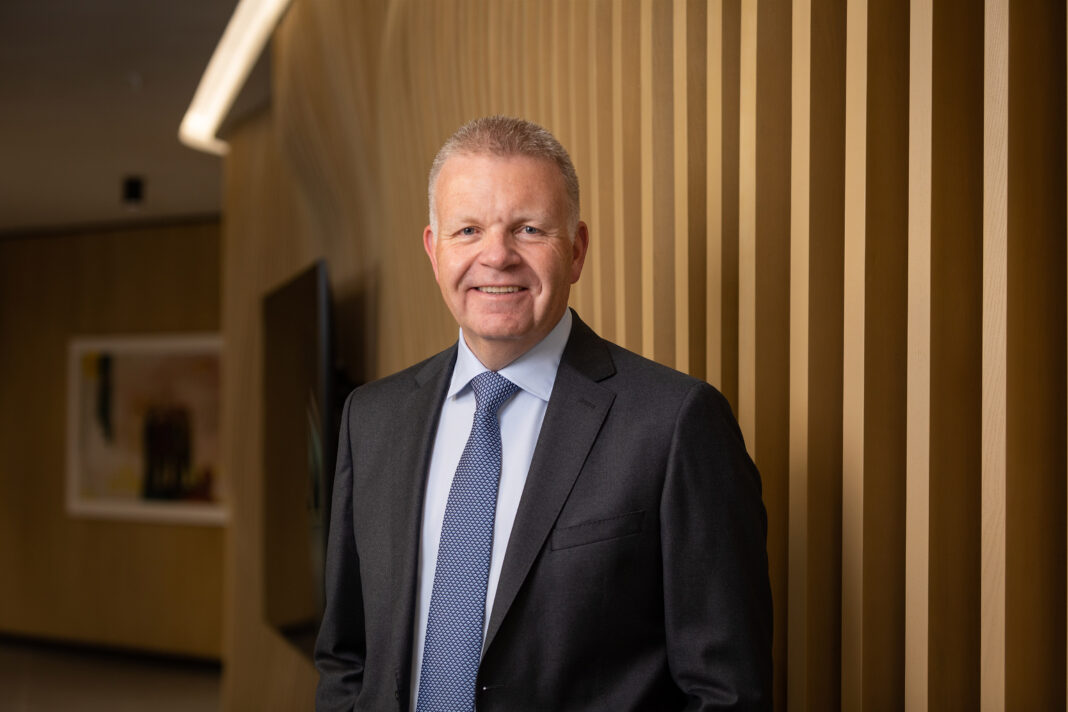Less than a year after being appointed CEO of Anglo American Platinum (Amplats), Craig Miller was summoned to the office of Duncan Wanblad, the boss of parent company Anglo American. It was May 2024, Platinum Week, when the world’s platinum group metals (PGM) miners went into a huddle, along with invited analysts, customers and investors.
As a crucial time of year, tensions were already high. Moreover, the PGM industry was in a price hole with more than 60% of South African production lossmaking. “I was getting ready to speak to my customers, and then the evening before, I get a message: ‘Come see me.’,” says Miller of that time.
“‘What have I done?’,” adds Miller. “It was like being called to the headmaster’s office.” It was at that meeting that Wanblad explained his plans for the demerger of Amplats, ending a decades-long relationship.
Wanblad had planned a major overhaul of Anglo American from at least the beginning of the year, possibly earlier. Now, however, there was big urgency owing to an unsolicited takeover proposal from Australian group BHP a month earlier.
Miller acknowledges he was at first bewildered by Wanblad’s plans, scheduled for completion within 18 months. While still earning his stripes as CEO, he was now finding the world was about to change for the company. As a listed subsidiary, Amplats had a cosy corner of the Anglo nest. Now, it was being kicked out.
Says Miller, up to this point an Anglo ‘lifer’: “I remember though leaving the office thinking this could turn out to be quite a good thing.” A year later, demerger completed, that hunch is proving to be correct, helped by a concerted recovery in the PGM basket price. Where once most of South African production was lossmaking, it’s now making money (assuming a basket price for the three most important PGMs of $1,500/oz).
Shares in Valterra Platinum, the new name of Miller’s company, have surged. This is despite worries the demerger would see a significant sale of shares held by UK investors. Valterra’s good health also comes after Anglo extracted a hefty R15.7bn full-year dividend from its platinum unit. Adrian Hammond, a precious metals analyst for Standard Bank Group Securities (SBGS), described the dividend as “poor governance” that left Valterra’s balance sheet under-resourced. Miller discloses it could have been worse.
It was like being called to the headmaster’s office
Craig Miller, Valterra Platinum
“They (Anglo) had aspirations [but we said] it’s not possible; it’s not feasible,” he says, alluding to demands Anglo made that it should extract even more out of Amplats. This would have required Amplats/Valterra to take on “a bit more debt”. It’s also worth noting that Anglo had sold new shares in Amplats worth R16.8bn during 2024 in part aimed at minimising the flowback by expanding the share register, partly with new shareholders.
However, Miller stuck by his guns. Valterra wanted to stay cash-neutral, he says, adding: “It was a tough period; some very difficult discussions.”
As matters stand, Valterra is set to be in net debt by end-June. It encountered a difficult first quarter operating environment in which Tumela, a shaft in the firm’s Amandelbult complex, situated in SA’s Limpopo province, was flooded after 300mm of rain fell in a day. “It was a one-in-100,000-year event,” says Miller. “An estimated 100mm of rain fell between 2am and 3am.”
That will mean lower production, perhaps as much as a 33% decline in sales, according to Hammond at SBGS, slightly offset by the improvement in PGM prices. Another potential headwind for the Valterra share price is that Anglo kept a 19.9% stake in Valterra which it will be entitled to sell from September 2025. Yet Miller is hugely optimistic about Valterra’s prospects.
STEADY HAND
Valterra doesn’t have the opportunity of embarking on a huge cost drive – the go-to strategy of a demerged company. That’s because it already extracted R12bn in sustaining and capital expenditure earlier this year. Nonetheless, it can focus on carefully developing its PGM resources, especially its giant Mogalakwena mine near Mokopane.
“As masters of their own destiny, Valterra should be able to unlock further value from its quality asset base,” said Arnold van Graan, an analyst at Nedbank Securities in a report prior to the Valterra demerger. The group was “more nimble”, he said. It “should be able to unlock significant upside from its assets, especially at Mogalakwena”.
An underground expansion of the mine is being studied, but Valterra stresses there’s no urgency. Mogalakwena can produce one million ounces annually, roughly half of Valterra’s total managed production, for the next decade before having to extend underground. “We are still at the study phase,” says Miller of the possible expansion. A decision is not due until 2027.

As for the other assets in the group, Miller says there’s clear strategy. “Amandelbult is an older asset, and we’ll look to maintain production and realise cash flow. Mototolo and Unki [a Zimbabwe mine] are both good cash contributors. Mototolo has the opportunity to increase production, but we would only look at that post the completion of the Mogalakwena project,” he says.
As a new management team there has been some speculation about whether Miller would look to strike into other assets through mergers and acquisitions. Miller says there’s no need to venture outside the firm’s current boundaries. “My peers generated a huge amount of cash in the PGM cycle and started buying assets, not necessarily in the PGM space [Sibanye-Stillwater] and some fought one another for the PGM assets [Impala Platinum and Northam Platinum]. Whereas we took the opportunity of investing in downstream processing and returning it to shareholders. That’s that bit of the track record that we need to continue to leverage from,” he says.
Miller’s plans aside, much depends on where the PGM market goes from here. In broad terms, a moderation in electric vehicle consumption in favour of hybrid petrol/battery versions, which use PGMs in autocatalysis, has breathed fresh life into the sector. That and the depletion of inventories by automakers. Jewellery demand has also revived. On the downside, macroeconomic growth is uncertain.
Van Graan says the PGM market is out of the downcycle. Other analysts agree. “[A] multiplicity of factors are seemingly converging to catalyse what could be the beginning of another upcycle in the PGMs,” says Investec Securities analyst Nkateko Mathonsi in a June report. “We are staying long.”
Perhaps, though, the greater factor of market balances is supply, especially from SA where the industry is undercapitalised from previous cycles. Nedbank’s Van Graan estimates that the number of operating shafts in SA’s production base has decreased to about 53 from about 61 in 2017. This number is expected to drop to roughly 47 shafts by 2030. Says Van Graan: “We thus expect production to fall short of current expectations. This prospect of flat and declining production should be bullish for PGM prices.”
Valterra is one of Investec’s picks in a possible upcycle while for Stephen Friedland, an analyst for UBS in Johannesburg, it is the preferred pick. “Valterra’s higher margins and lower platinum exposure make it the least sensitive in the peer group,” he says. The company “continues to screen best on valuation grounds” while further efficiency gains are in the offing.




